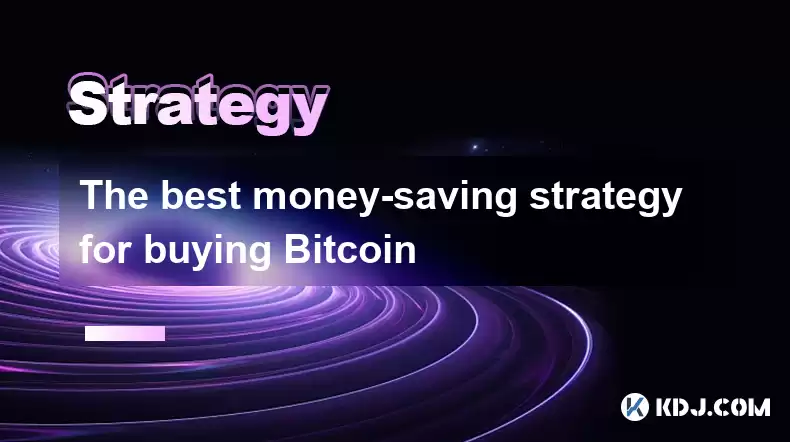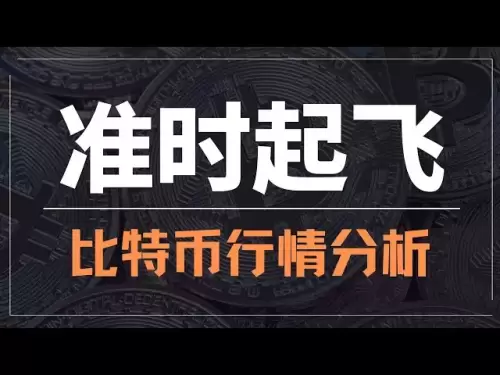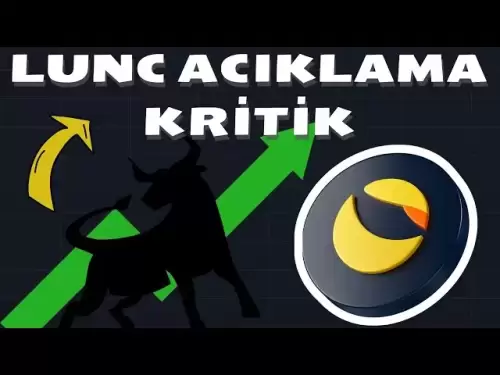-
 Bitcoin
Bitcoin $117300
1.93% -
 Ethereum
Ethereum $3866
5.21% -
 XRP
XRP $3.109
3.81% -
 Tether USDt
Tether USDt $1.000
0.01% -
 BNB
BNB $781.5
1.52% -
 Solana
Solana $173.0
2.95% -
 USDC
USDC $0.9998
0.00% -
 Dogecoin
Dogecoin $0.2181
6.31% -
 TRON
TRON $0.3403
0.93% -
 Cardano
Cardano $0.7683
3.91% -
 Hyperliquid
Hyperliquid $40.08
5.09% -
 Sui
Sui $3.742
7.38% -
 Stellar
Stellar $0.4152
4.69% -
 Chainlink
Chainlink $18.40
10.03% -
 Bitcoin Cash
Bitcoin Cash $580.6
2.21% -
 Hedera
Hedera $0.2543
4.25% -
 Ethena USDe
Ethena USDe $1.001
-0.01% -
 Avalanche
Avalanche $22.94
3.52% -
 Litecoin
Litecoin $121.8
2.24% -
 UNUS SED LEO
UNUS SED LEO $8.955
-0.41% -
 Toncoin
Toncoin $3.330
3.03% -
 Shiba Inu
Shiba Inu $0.00001270
2.97% -
 Uniswap
Uniswap $10.34
6.42% -
 Polkadot
Polkadot $3.805
3.86% -
 Dai
Dai $1.000
0.01% -
 Bitget Token
Bitget Token $4.429
1.80% -
 Cronos
Cronos $0.1495
4.65% -
 Monero
Monero $255.6
-9.08% -
 Pepe
Pepe $0.00001096
4.40% -
 Aave
Aave $282.9
7.85%
The best money-saving strategy for buying Bitcoin
To save for Bitcoin, set a budget, use dollar-cost averaging, leverage crypto savings accounts, minimize transaction fees, and take advantage of Bitcoin rewards programs.
Apr 16, 2025 at 05:49 am

In the world of cryptocurrencies, Bitcoin stands as the pioneer and the most widely recognized digital currency. For those looking to invest in Bitcoin, adopting an effective money-saving strategy can be crucial. This article explores the best money-saving strategies for buying Bitcoin, ensuring that potential investors can maximize their investments while minimizing unnecessary expenditures.
Setting a Budget and Sticking to It
Before diving into the world of Bitcoin, it's essential to set a clear budget. Determining how much you can afford to invest without affecting your financial stability is the first step in any investment journey. A well-defined budget helps in avoiding impulsive decisions and ensures that you only invest what you can afford to lose.
To set a budget, consider your monthly income and expenses. Calculate the disposable income you can allocate to Bitcoin without compromising your essential needs. Once you have a figure, stick to it rigorously. Resist the temptation to go beyond your set budget, as the cryptocurrency market can be highly volatile, and losses are possible.
Utilizing Dollar-Cost Averaging
Dollar-cost averaging (DCA) is a strategy that involves investing a fixed amount of money at regular intervals, regardless of the market's performance. This approach can help mitigate the impact of volatility and reduce the risk of investing a large sum at an inopportune time.
To implement DCA for buying Bitcoin, follow these steps:
- Choose a fixed amount: Decide on a monthly or weekly amount you can comfortably invest.
- Select a schedule: Set a regular schedule for your investments, such as the first of every month or every Friday.
- Automate your investments: Use a platform that allows you to automate your investments, ensuring that you stick to your schedule without needing to manually execute each transaction.
By spreading out your investments over time, you can buy more Bitcoin when prices are low and less when prices are high, ultimately averaging out your cost per Bitcoin.
Taking Advantage of Crypto Savings Accounts
Crypto savings accounts offer another avenue for saving money while earning interest on your Bitcoin holdings. These accounts, offered by various cryptocurrency platforms, allow you to deposit your Bitcoin and earn interest over time, similar to traditional savings accounts.
To make the most of crypto savings accounts, consider the following:
- Research different platforms: Look for platforms that offer competitive interest rates and have a good reputation for security and reliability.
- Understand the terms: Be aware of the terms and conditions, including withdrawal limits and any potential fees.
- Diversify your savings: Consider spreading your Bitcoin across multiple platforms to minimize risk and maximize returns.
By utilizing crypto savings accounts, you can grow your Bitcoin holdings passively, effectively saving money while your investment works for you.
Minimizing Transaction Fees
Transaction fees can eat into your Bitcoin savings, especially if you're making frequent trades. To minimize these fees, it's important to choose the right platforms and strategies.
Here are some tips for reducing transaction fees:
- Use low-fee exchanges: Opt for exchanges that offer competitive fee structures. Some platforms offer reduced fees for high-volume traders or for using their native tokens.
- Batch your transactions: Instead of making multiple small transactions, consider batching your trades to reduce the overall fee cost.
- Consider using a decentralized exchange (DEX): DEXs often have lower fees compared to centralized exchanges, although they may offer fewer features.
By being mindful of transaction fees, you can save a significant amount of money over time, allowing you to invest more in Bitcoin.
Leveraging Bitcoin Rewards and Cashback Programs
Bitcoin rewards and cashback programs are another way to save money while accumulating Bitcoin. Many platforms and services offer rewards in the form of Bitcoin for using their services or making purchases.
To take advantage of these programs, consider the following:
- Sign up for Bitcoin reward platforms: Platforms like Lolli and Fold offer cashback in Bitcoin for shopping at various retailers.
- Use Bitcoin debit cards: Some debit cards linked to your Bitcoin wallet offer cashback rewards on purchases, allowing you to earn Bitcoin while spending.
- Participate in referral programs: Many crypto platforms offer referral bonuses in Bitcoin for bringing in new users.
By leveraging these programs, you can earn additional Bitcoin without needing to invest more money, effectively saving on your overall investment costs.
Frequently Asked Questions
Q: Can I use traditional savings accounts to save for Bitcoin?
A: While traditional savings accounts can help you save money, they do not directly contribute to your Bitcoin holdings. To save specifically for Bitcoin, consider using crypto savings accounts that offer interest in Bitcoin or other strategies mentioned in this article.
Q: Is it safe to automate my Bitcoin investments?
A: Automating your Bitcoin investments can be safe if you choose a reputable platform with strong security measures. Always research the platform's security features and user reviews before setting up automated investments.
Q: How often should I review my Bitcoin investment strategy?
A: It's a good practice to review your Bitcoin investment strategy at least quarterly. This allows you to adjust your budget, reassess your DCA schedule, and ensure that your savings and investment strategies are still aligned with your financial goals.
Q: Can I save money by trading Bitcoin frequently?
A: Frequent trading can lead to higher transaction fees and potential losses due to market volatility. While some traders may profit from frequent trading, it's generally not a recommended strategy for saving money on Bitcoin investments. Stick to long-term strategies like DCA and savings accounts for more consistent savings.
Disclaimer:info@kdj.com
The information provided is not trading advice. kdj.com does not assume any responsibility for any investments made based on the information provided in this article. Cryptocurrencies are highly volatile and it is highly recommended that you invest with caution after thorough research!
If you believe that the content used on this website infringes your copyright, please contact us immediately (info@kdj.com) and we will delete it promptly.
- Bitcoin Reserve, Gold Revaluation, Congress Considers: A New Era for US Financial Strategy?
- 2025-08-08 04:30:12
- KAITO's Momentum: Can It Reclaim Support Amidst Social Media Scrutiny?
- 2025-08-08 04:30:12
- Pi Coin's dApp and AI Potential: Building a Decentralized Future
- 2025-08-08 02:30:12
- Ruvi AI Takes the Lead: Outshining Dogecoin on CoinMarketCap
- 2025-08-08 02:50:12
- Cryptos Under $1: Is Ripple Still the King?
- 2025-08-08 03:50:12
- Cold Wallet, Bonk Price, ICP Price: Navigating the Crypto Landscape in 2025
- 2025-08-08 03:56:12
Related knowledge

How to avoid common crypto investment mistakes?
Jul 13,2025 at 01:35am
Understanding the Risks of Crypto InvestmentInvesting in cryptocurrency can be highly rewarding, but it also comes with significant risks. One of the ...

What is a long-short crypto strategy?
Jul 15,2025 at 10:56am
Understanding the Basics of a Long-Short Crypto StrategyA long-short crypto strategy is an investment approach where traders simultaneously take long ...

What is a long-short crypto strategy?
Jul 11,2025 at 01:28pm
Understanding the Basics of Long-Short Crypto StrategyA long-short crypto strategy is an investment approach where traders take both long and short po...

How to use the RSI indicator for crypto?
Jul 12,2025 at 03:56pm
Understanding the RSI Indicator in Cryptocurrency TradingThe Relative Strength Index (RSI) is a momentum oscillator used to measure the speed and chan...

Is copy trading a good strategy for crypto beginners?
Jul 12,2025 at 08:28am
Understanding Copy Trading in the Cryptocurrency MarketCopy trading is a strategy where novice traders replicate the trades of experienced investors a...

How to build a crypto portfolio with $1000?
Jul 13,2025 at 08:14pm
Understanding the Basics of Cryptocurrency InvestmentBuilding a crypto portfolio with $1000 starts with understanding the fundamentals of cryptocurren...

How to avoid common crypto investment mistakes?
Jul 13,2025 at 01:35am
Understanding the Risks of Crypto InvestmentInvesting in cryptocurrency can be highly rewarding, but it also comes with significant risks. One of the ...

What is a long-short crypto strategy?
Jul 15,2025 at 10:56am
Understanding the Basics of a Long-Short Crypto StrategyA long-short crypto strategy is an investment approach where traders simultaneously take long ...

What is a long-short crypto strategy?
Jul 11,2025 at 01:28pm
Understanding the Basics of Long-Short Crypto StrategyA long-short crypto strategy is an investment approach where traders take both long and short po...

How to use the RSI indicator for crypto?
Jul 12,2025 at 03:56pm
Understanding the RSI Indicator in Cryptocurrency TradingThe Relative Strength Index (RSI) is a momentum oscillator used to measure the speed and chan...

Is copy trading a good strategy for crypto beginners?
Jul 12,2025 at 08:28am
Understanding Copy Trading in the Cryptocurrency MarketCopy trading is a strategy where novice traders replicate the trades of experienced investors a...

How to build a crypto portfolio with $1000?
Jul 13,2025 at 08:14pm
Understanding the Basics of Cryptocurrency InvestmentBuilding a crypto portfolio with $1000 starts with understanding the fundamentals of cryptocurren...
See all articles

























































































